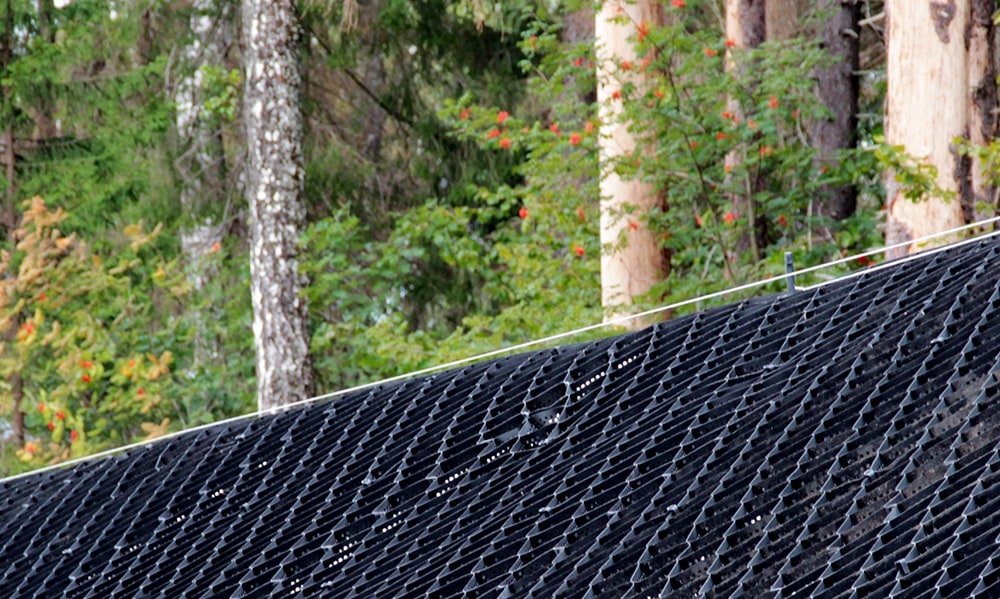The History of Geosynthetics
Over the past 40 years, geosynthetics have become widespread. These artificially created building materials with unique properties help solve complex problems in various construction industries.
Geosynthetic materials were first used in the 1960s in the United States. A decade later, these products appeared in the Soviet Union. Thanks to large-scale scientific research, geosynthetics began to be actively used.
At that time, special normative documents that determine the requirements for products and the conditions for their operation were already applied in the Western countries.
First-generation Geosynthetics
The development of geosynthetics in Russia spanned more than one decade and was very eventful. The Ministry of Transport Construction of the USSR developed and approved a program for improving materials in the 1970-80s. It also included expanding the scope of their application to build roads, ports, airfields, etc. As a result, the base for producing the products in question arose and was significantly expanded, and the quality of the constructed facilities increased significantly.
The Moscow-Riga highway became the place where the first experimental works were carried out using geosynthetics. Soyuzdorniya specialists built «wet» excavations on a certain section of the road. After that, geosynthetics began to be used to stabilize waterlogged excavations.
Soon geosynthetics were presented as reinforcing elements, filtration systems, and separation layers. At that time, mainly nonwoven needle-punched material of both Soviet and foreign production was studied. It was first used in road construction. After lengthy research, a special branch of road geotechnics was formed. The main requirements for innovative products were formulated:
- ensuring the required durability;
- change in drainage conditions;
- ensuring the reliability of the roadway.
In the 70s, the emphasis was on geosynthetics’ drainage and filtering capacity and the study of the ultimate strength and deformability.
In 1977, the first nonwoven fabric was produced, and its production was launched at the same time. In subsequent years, geosynthetics production technology was improved and adapted for use in various climatic zones, including areas with permafrost. In addition, the first roads with a geosynthetics layer in their structure were built.
Second-generation Geosynthetics
A new round took place in the 90s. This was due to the use of new technologies and broader scientific capabilities. In the same period, the first European geosynthetics conference (EUROGEO) dedicated to these unique materials was held. Since 1998, local and international events have been held regularly. This contributed to the unification of manufacturers and buyers and product developers, the exchange of experience, and the collective search for new promising solutions for the use of geosynthetics in civil and industrial construction.

One of the first PRESTORUS projects — the retaining wall of the Blue Stream MG
Development prospects
The main goal of specialists working with geosynthetic materials today is to expand their range. For this, large-scale tests of three-dimensional geocells are being carried out. They are designed primarily to strengthen slopes. However, their potential is much broader, so scientists are developing more and more new ways to use them in new industries. Road construction with their use has become a standard.
The developers recommend using geosynthetics when reinforcing asphalt concrete pavements. New technologies have helped create new types of geosynthetic materials (fiberglass grids) characterized by different mesh sizes, increased strength, and excellent cohesion.
PRESTORUS manufactures and supplies high-quality geosynthetics for various purposes:
- weld-free geocell GEOSTEP®
- reinforced geocell GEOCORD®
- nonwoven geotextile GEOKNIT-N®
- flexible concrete slabs GEOSOTY®
- geomembrane
- accessories
Created according to the most modern technologies and meeting all quality standards, these materials are indispensable in many industrial and construction areas. We guarantee our clients 100% compliance with the declared properties and the quality of each batch.

 About Us
About Us 






